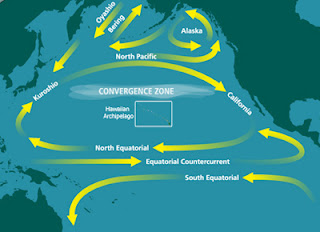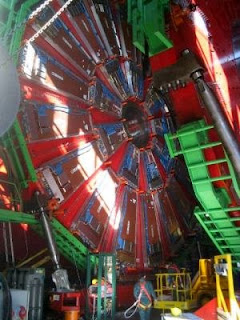Máel "the Bucktooth" Brigte of Moray was a nobleman in what is today Scotland who managed to kill his enemy after his own death. British nobility in general is confusing to me, but the Scots have a particularly convoluted history; Máel was a Pict who was likely the Mormaer in Moray in the 10th century. He'd made enemies with Sigurd "the Mighty" Eysteinsson, an Earl of nearby Orkney of Viking descent. Sigurd challenged Máel to settle their differences in a battle of forty men each at a field in what was probably Easter Ross. Máel arrived first, and as he watched the forty horses of his enemy arrive, he noticed that each carried two men. Unsurprisingly, the outnumbered force lost the battle, and Sigurd took his foe's head as a trophy. Typically, such a trophy was hung from the saddle, and while Sigurd rode home, Máel's infamous buck tooth scratched his killer's leg. The scratch became infected and killed Sigurd, resulting in an odd posthumous kill.
Texas is a bit odd in that some areas are among the most densely populated in the nation, but others are very remote and deserted. Marfa is a small town of about 2,000 that qualifies as such, and yet, it has a Prada store. Actually, "store" is incorrect: it doesn't sell anything. In fact, the artists Elmgreen and Dragset consider it an installed sculpture, a kind of combination of pop art, land art, and architecture. Installed in 2005, its door doesn't open, its displayed wares of six handbags and fourteen shoes are never meant to be sold, and it is not maintained. Despite having the minimalist advertising that Prada gives all of their outlets, and the support of Miuccia herself (who selected and donated the wares), the building is meant to be left to slowly degrade away naturally. Except to repair vandalism that occurred within days of opening, that's exactly what has been allowed to happen.
 |
| They say that fashion can be a lonely world. |
The Great Pacific Garbage Patch in the northern Pacific Ocean isn't as obscure as it used to be, but is still widely misrepresented. Chain emails sometimes describe it as a giant island of litter miles wide (Snopes refuted a story that there was a reef of used condoms south of Australia), which is a stretch of the truth. There is indeed a vortex of pollution roughly between 135° to 155°W and 35°N to 42°N (north of Hawaii), but its exact size and shape is indeterminate and ever-shifting anyway. Rough estimates say that it's probably about twice the area of Texas (making it about 500,000 sq mi or 1.2 million km2). The real misconception is that it's a giant mass: the whole thing is invisible to the naked eye. The Garbage Patch is characterized by high concentrations of tiny plastic particles and other chemicals. Essentially, debris and litter from the Pacific Ring (North America, Russia, Japan, and SE Asia) are caught in the North Pacific Gyre, and is unable to escape the currents. As the plastics break down to it's component polymers, the particles become too small to see, but are still suspended and submerged. Even though it's not a giant pile of trash, it's still problematic: the pollution can be toxic to marine life and anyone that eats it (to include humans), not to mention animals choking on tiny bits of netting and fishing line.
 |
| Most of the Garbage Patch lies within the convergence zone north of Hawaii. |
Whenever one discusses the Large Hadron Collider (LHC), discussion often drifts to the associated doomsday scenarios (unless, of course, you're a scientist, then you'd talk physics). The world's largest particle accelerator, it was built by CERN near Geneva and started doing experiments in 2009, though the controversy is much older. Since it began getting media attention, people have created a buzz of concern over how it might destroy the Earth, despite the reassurances offered by CERN and many other physicists. The main theory is that it could create black holes, which would then swallow the planet. However, the energies involved are far too low to create one, and even if it did, it would be a micro-sized one that would last less than an instant and be unable to acrete matter before it decayed from Hawking radiation. The other prevalent thoery involves strange matter, a still-hypothetical type of quark that could create a cascade of fusion with normal matter and turn the planet and everything on it into a mush of strange matter. The production of strangelets (portions of strange matter) isn't considered possible at the energies involved with the LHC... in fact, older accelerators with lower energies would have been more likely to create it and dissolve us all to liquid. Thus far, all legal challenges have been ineffective at stopping the LHC, and they will smash particles for many years to come.
 |
| Just because we don't know what it is doesn't mean we should be scared of it. |
Write-in candidates on election ballots are usually impossibilities or jokes (I didn't like any of the candidates in the most recent New York gubernatorial, so I wrote in my mother's name). That said, sometimes, they can surprise you. In the parish of Picoazá (a municipality of the city of Portoviejo in Ecuador) saw corporate sponsorship run amok in 1967. A brand of foot powder called Pulvapies wound up receiving the most votes for mayorship after a brief campaign by its owning pharmaceutical company, which included slogans like "Vote for any candidate, but if you want well-being and hygiene, vote for Pulvapies". Again with the royalty, the 1862 head of state referendum in Greece saw 95% of the 240,000 votes seek Prince Alfred of the United Kingdom (son of Queen Victoria) to become the next king. Though the people deposed King Otto, they still wanted a monarchy (over 1,700 votes merely said "a king", compared to 93 for "a republic" and one for Otto)... and being fresh out of local royalty, they decided to shop outsource rather than promote. However, political issues with Britain, France, and Russia kept their nobility from accepting. Prince William of Denmark, who received six votes, was anointed as King George I of Greece the following year.
 |
| Another write-in candidate, Mayor McCheese's term was fraught with controversy until his assassination in Dallas in 1963. |
Lastly, I have a couple of featured images for you. Happy reading!
 |
| This écorché of a horse and rider was flayed and mummified by Honoré Fragonard between 1766 & 1771. |
 |
| This cradle at Cliffe Castle Museum is designed for husbands to use with a distraught wife. |
No comments:
Post a Comment